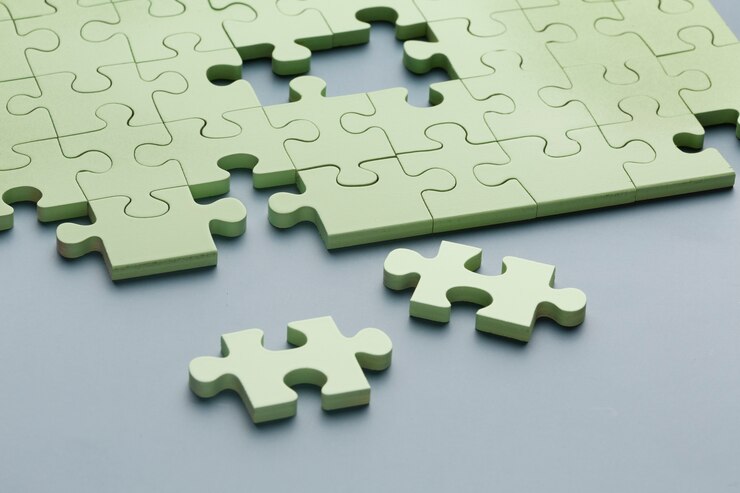In an increasingly digital world, there is something captivating about the tactile experience of assembling a jigsaw puzzle. The humble jigsaw puzzle has been a favorite pastime for people of all ages for centuries, offering a unique blend of relaxation, challenge, and satisfaction. Let’s delve into the fascinating world of jigsaw puzzles, exploring their history, benefits, and the joy they bring to millions of enthusiasts worldwide.
A Brief History of Jigsaw Puzzles
The origins of jigsaw puzzles can be traced back to the 18th century when European mapmakers mounted maps on wood and cut them into small pieces to create educational tools for teaching geography. These early puzzles were known as “dissected maps” and were primarily used for educational purposes.
The concept of jigsaw puzzles as we know them today began to gain popularity in the late 19th century, with the invention of the jigsaw cutting machine by John Spilsbury. Spilsbury, a British cartographer and engraver, created the first commercially produced jigsaw puzzle by mounting a map on a thin sheet of wood and cutting it into small interlocking pieces. These puzzles quickly became a hit among the Victorian upper class as a form of entertainment and mental exercise.
The Appeal of Jigsaw Puzzles
What makes jigsaw puzzles so enduringly popular? The answer lies in the unique blend of benefits they offer to enthusiasts of all ages. Here are some of the key reasons why people are drawn to the world of jigsaw puzzles:
1. Relaxation and Stress Relief
Assembling a jigsaw puzzle can be a meditative experience, allowing individuals to focus their minds on the task at hand and forget about the stresses of daily life. The repetitive motion of sorting and fitting puzzle pieces together can have a calming effect on the mind, promoting mindfulness and relaxation.
2. Cognitive Benefits
Jigsaw puzzles are excellent tools for sharpening cognitive skills such as problem-solving, spatial reasoning, and memory. The process of matching shapes and colors, figuring out where each piece fits, and visualizing the completed image all contribute to mental stimulation and brain exercise.
3. Social Connection
Jigsaw puzzles are often enjoyed as a social activity, bringing friends and family members together to collaborate and bond over a shared goal. Working on a puzzle as a group fosters teamwork, communication, and a sense of accomplishment when the final piece is placed.
4. Sense of Accomplishment
There is a unique sense of satisfaction that comes from completing a jigsaw puzzle. The moment when the final piece fits snugly into place and the full image is revealed is a moment of triumph and fulfillment, rewarding the hours of focus and effort put into solving the puzzle.
Types of Jigsaw Puzzles
Jigsaw puzzles come in a wide variety of sizes, shapes, and themes to suit every preference and skill level. Some popular types of jigsaw puzzles include:
1. Standard Puzzles
Standard jigsaw puzzles consist of interlocking cardboard pieces that form a complete image when assembled. These puzzles come in various piece counts, ranging from a few dozen to thousands of pieces, offering a challenge for beginners and seasoned puzzlers alike.
2. 3D Puzzles
3D jigsaw puzzles add an extra dimension of complexity by requiring assemblers to build a three-dimensional structure, such as famous landmarks, buildings, or sculptures. These puzzles often involve intricate piece shapes and innovative construction techniques.
3. Custom Puzzles
Custom jigsaw puzzles allow individuals to create personalized puzzles featuring their own photos, artwork, or designs. These unique puzzles make for thoughtful gifts, keepsakes, and memorable mementos of special occasions.
4. Specialty Puzzles
Specialty jigsaw puzzles cater to niche interests and preferences, with themes ranging from fine art, nature, and animals to fantasy, vintage, and pop culture. Puzzle enthusiasts can find a puzzle for virtually any topic or aesthetic they are passionate about.
Tips for Solving Jigsaw Puzzles
Whether you are a novice puzzler or a seasoned expert, here are some tips to enhance your jigsaw puzzle-solving experience:
1. Sort and Organize
Start by sorting the puzzle pieces by color, pattern, and edge pieces to make it easier to locate the right pieces as you assemble the puzzle.
2. Work on Sections
Focus on assembling smaller sections of the puzzle, such as grouping pieces by color or pattern, before connecting them to the larger picture.
3. Use the Image as a Guide
Refer to the image on the puzzle box or poster as a guide to visualize the completed picture and identify where each piece fits in the overall design.
4. Take Breaks
Don’t be afraid to take breaks and step away from the puzzle if you feel stuck or overwhelmed. Sometimes, a fresh perspective can help you see the solution more clearly.
5. Enjoy the Process
Above all, remember that solving a jigsaw puzzle is about the journey, not just the destination. Enjoy the process of discovery, exploration, and creativity that comes with piecing together a beautiful image.
Conclusion
In a world filled with technological distractions, jigsaw puzzles offer a simple yet profound way to unwind, engage the mind, and connect with loved ones. Whether you are a casual puzzler looking for a relaxing activity or a dedicated enthusiast seeking a mental challenge, there is a jigsaw puzzle out there for you. So grab a puzzle, clear a space on the table, and embark on a rewarding journey of creativity, focus, and joy through the timeless allure of jigsaw puzzles.


